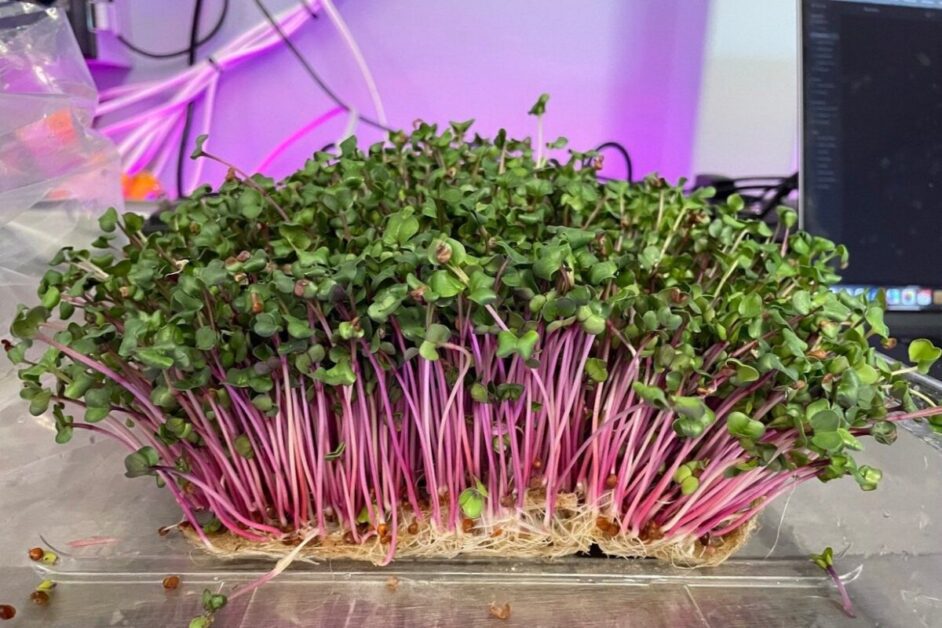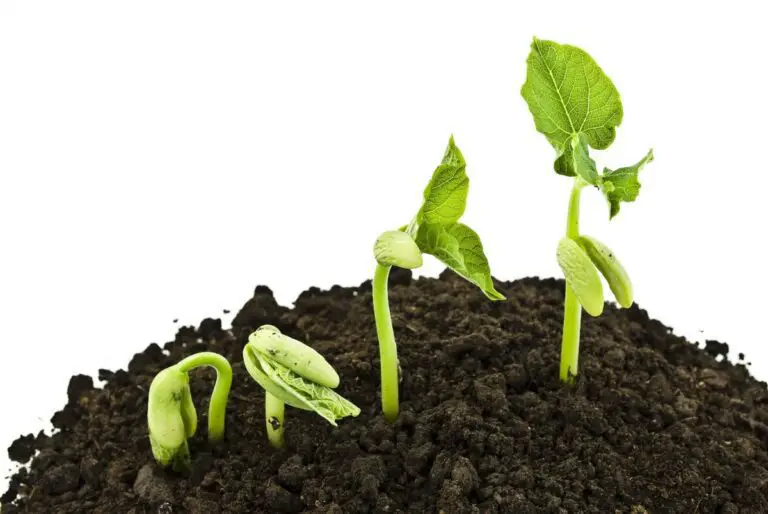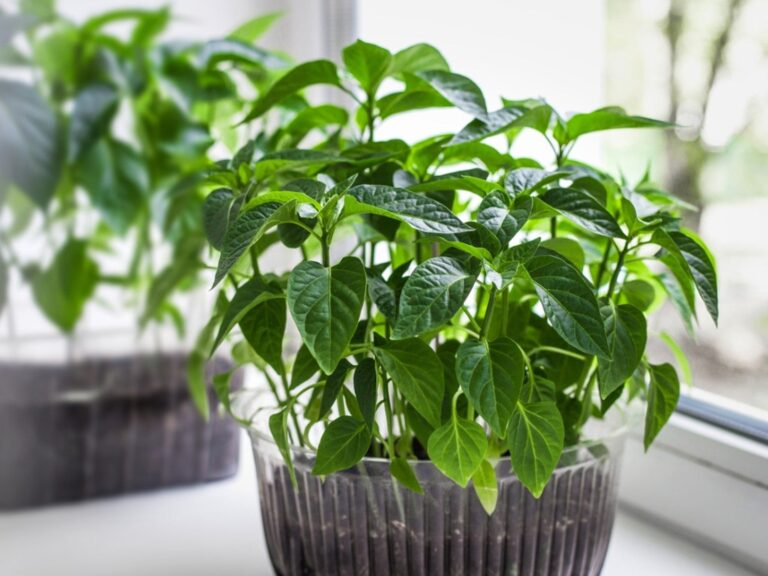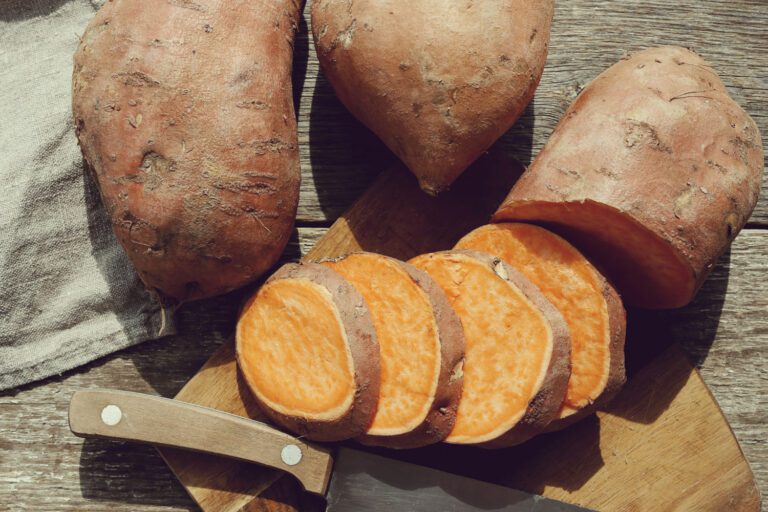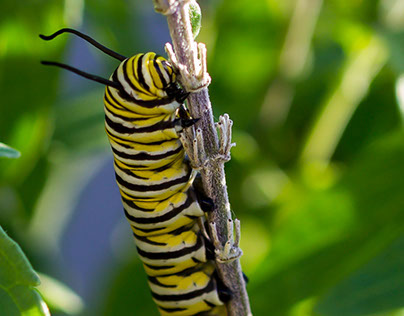Growing Hydroponic Microgreens: How to Grow Fresh and Healthy Microgreens in Water
Are you looking to add a burst of freshness to your meals? Dive into the world of hydroponic microgreens! Did you know that these tiny greens pack a powerful punch of nutrients and flavor? In this guide, we’ll show you how to grow fresh and healthy microgreens right in the comfort of your home, using nothing but water. No soil needed! Whether you’re a seasoned gardener or a newbie to hydroponics, we’ve got you covered with easy-to-follow tips and tricks. Get ready to elevate your dishes with vibrant greens bursting with flavor and nutrients. Let’s dive in and discover the joys of growing hydroponic microgreens together!
Table of Contents
Understanding the Basics of Hydroponic Microgreens
Microgreens have gained significant popularity in recent years due to their nutritional value and versatility in culinary applications. As a gardener, you may be intrigued by the concept of hydroponic microgreens and their potential benefits.

- Nutrient Efficiency:
- Hydroponic microgreens receive a precisely balanced nutrient solution directly, eliminating the need for roots to search for nutrients in soil.
- This efficiency leads to faster growth and healthier plants.
- Accelerated Growth:
- Without soil limitations, microgreens grow rapidly in hydroponic systems.
- You’ll have harvest-ready greens in a fraction of the time compared to traditional soil-based methods.
- Flavor and Nutrient Retention:
- The controlled environment ensures that microgreens retain their optimal flavor and nutritional content.
- You’ll enjoy vibrant, flavorful greens packed with vitamins and minerals.
- Environmental Control:
- Hydroponic systems allow precise adjustments of temperature, humidity, and lighting.
- You can create the perfect conditions for your microgreens, regardless of external weather.
- Contaminant-Free Cultivation:
- Soil-borne pathogens and contaminants are minimized in hydroponics.
- Your microgreens will be cleaner and safer for consumption.
Remember to choose the right hydroponic system (such as nutrient film technique, deep water culture, or aeroponics) based on your available space, budget, and preferences. Understanding these basics will set the foundation for successfully cultivating hydroponic microgreens and reaping the rewards of this innovative growing method.
“Microgreens Intense by Brent Montgomery has been a game-changer in my kitchen garden journey. This comprehensive guide offers invaluable insights into hydroponic microgreen cultivation, from setup to harvest. With clear instructions and helpful tips, even novices like me can successfully grow nutrient-packed microgreens year-round.
However, I found that there’s a bit of a learning curve, especially when it comes to maintaining the hydroponic system and ensuring optimal nutrient levels. Yet, the results are worth it. The abundance of fresh, flavorful microgreens harvested right from my own home is truly rewarding. Overall, Microgreens Intense is a must-have for anyone looking to elevate their culinary experience and add a healthy dose of greens to their diet.”
- Comprehensive Guide: “Microgreens Intense” by Brent Montgomery provides a detailed and insightful guide to growing microgreens hydroponically, catering to beginners and experienced growers alike.
- Nutrient Density: Hydroponically grown microgreens are known for their high nutrient content, making them a nutritious addition to salads, sandwiches, and smoothies.
- Year-Round Cultivation: With hydroponic systems, microgreens can be grown indoors year-round, regardless of outdoor weather conditions, ensuring a constant supply of fresh greens.
- Space Efficiency: Hydroponic microgreens require minimal space, making them ideal for urban dwellers or those with limited gardening space.
- Cost-Effective: Growing microgreens hydroponically can be cost-effective in the long run, as it eliminates the need for soil and reduces water usage compared to traditional gardening methods.
- Initial Investment: Setting up a hydroponic system for growing microgreens may require an initial investment in equipment such as grow lights, trays, and nutrient solutions.
- Learning Curve: While the book provides comprehensive guidance, there may be a learning curve for beginners who are new to hydroponic gardening techniques.
- Maintenance: Hydroponic systems require regular maintenance, including monitoring nutrient levels, pH balance, and water quality, to ensure optimal plant growth.
- Limited Variety: While microgreens offer a wide range of flavors and nutrients, the variety of crops that can be grown hydroponically may be limited compared to traditional soil cultivation.
- Potential Risks: As with any gardening method, there are potential risks such as pest infestations, diseases, and nutrient deficiencies that may affect the success of hydroponic microgreen cultivation.
Selecting the Right Varieties for Hydroponic Microgreens
When selecting the right varieties for hydroponic microgreens, it is important to consider several factors that will affect their growth and quality.

- Flavor Profile:
- Different microgreens varieties offer varying flavors, from mild to strong and pungent.
- Experiment with various flavors to enhance your culinary creations.
- Growth Rate and Maturity:
- Some varieties grow faster than others.
- Quick-growing varieties are advantageous for a rapid harvest, while slower-growing ones offer unique textures and flavors.
- Visual Appeal:
- Vibrant colors (reds, purples, greens) add visual interest to dishes.
- Mix different colored varieties for an eye-catching display.
- Adaptability to Hydroponics:
- Choose varieties specifically bred or selected for soil-less systems.
- These varieties are more likely to thrive in your hydroponic setup.
By considering these factors, you can choose the right varieties for hydroponic microgreens that suit your taste preferences, growth requirements, visual appeal, and cultivation methods. With a diverse selection of varieties, you can enjoy a wide range of flavors, colors, and textures in your hydroponic microgreens.
Preparing the Hydroponic System for Growing Microgreens
Before diving into the exciting world of hydroponic microgreens, it is crucial to properly prepare your hydroponic system. The success of your microgreen cultivation depends heavily on the foundation you lay in the initial stages. Paying attention to the following steps will ensure a thriving and productive hydroponic system.
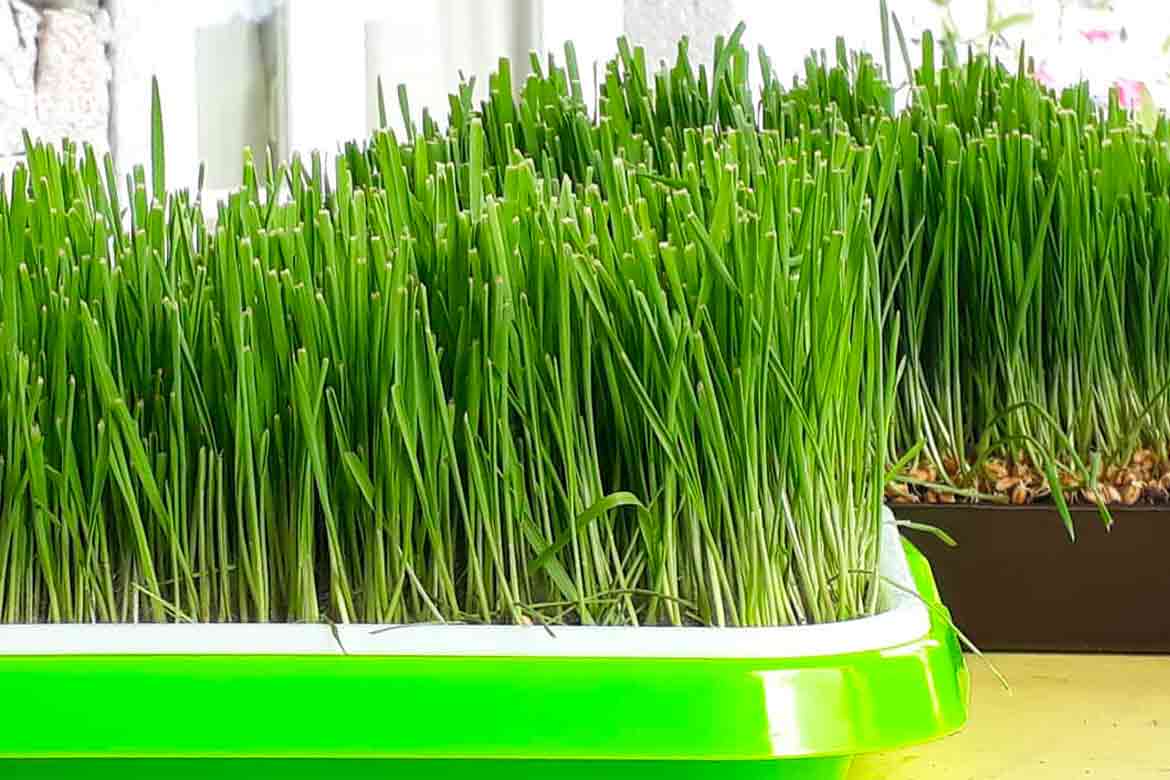
- Clean and Sterilize Equipment: Thoroughly clean and sterilize all components of your hydroponic system using mild detergent and warm water to prevent harmful bacteria and pathogens from hindering microgreen development.
- Set up Support Structure: Choose trays or racks designed for hydroponic cultivation with proper drainage holes to prevent waterlogging and promote root oxygenation. A stable support structure ensures efficient water and nutrient utilization.
- Establish a Solid Foundation: Taking time to clean, sterilize, and set up appropriate support structures lays the groundwork for successful microgreen cultivation.
- Ensure Healthy Environment: By creating a clean and conducive environment, you provide optimal conditions for microgreens to thrive, setting the stage for successful growth.
- Move Forward Confidently: With a well-prepared hydroponic system in place, you’re ready to embark on the exciting journey of growing microgreens with confidence and enthusiasm.
With a well-prepared hydroponic system, you can move forward confidently, ready to delve into the exciting realm of microgreen growth.
“Plant Growing Trays with Drain Holes have streamlined my hydroponic microgreen cultivation process. Their efficient design ensures proper drainage, preventing waterlogged roots and promoting healthy growth. These trays are incredibly durable, providing reliable support for my growing trays without the worry of cracks or breakage.
However, I did encounter some limitations in terms of size, which may restrict the quantity of microgreens I can cultivate at once. Additionally, while the drain holes are beneficial for preventing waterlogging, they can sometimes lead to excessive water loss, requiring more frequent monitoring and watering. Despite these minor drawbacks, Plant Growing Trays with Drain Holes remain an essential tool in my microgreen setup, offering convenience and reliability for successful cultivation.”

✅ Durable Material: Constructed from sturdy materials, these trays are durable and long-lasting, providing reliable support for growing trays of various sizes.
✅ Versatile Use: These trays are suitable for a wide range of microgreens and herbs, offering versatility in cultivation options for home gardeners and commercial growers alike.
✅ Easy Maintenance: With their easy-to-clean surface, these trays require minimal maintenance, saving time and effort in the gardening process.
✅ Cost-Effective: Plant Growing Trays are an affordable option for anyone looking to start or expand their microgreen operation, offering value for money without compromising quality.
❌ Compatibility Issues: Depending on the specific hydroponic setup, these trays may not be compatible with certain growing systems or accessories, requiring additional customization.
❌ Drainage Concerns: While the drain holes are beneficial for preventing waterlogging, they may also lead to excessive water loss in arid climates or under high temperatures, requiring more frequent watering.
❌ Fragility: Some users may find that these trays are prone to cracking or breaking under heavy use or mishandling, necessitating careful handling and storage.
❌ Environmental Impact: The production and disposal of plastic trays contribute to environmental concerns, particularly regarding plastic waste and pollution, prompting eco-conscious consumers to seek alternative options.
Sourcing Quality Seeds for Hydroponic Microgreens
When it comes to sourcing quality seeds for hydroponic microgreens, it is crucial to choose varieties that are specifically bred for this growing method. These seeds are typically selected for their ability to thrive in controlled environments without soil.

- Germination Rate: Select seeds with a high germination rate to increase the likelihood of a successful microgreen harvest.
- Seed Purity: Choose seeds free from contaminants or unwanted plant material to ensure optimal growth without competition from other plants or risk of pests or diseases.
- Trusted Suppliers: Source seeds from trusted suppliers or reputable seed companies that provide detailed information about seed purity.
- Quality Foundation: Taking the time to source high-quality seeds sets a solid foundation for your hydroponic microgreen venture, enhancing the chances of a bountiful harvest.
Soaking and Prepping Seeds for Hydroponic Microgreens
Soaking and prepping seeds is a critical first step in successfully growing hydroponic microgreens. By properly preparing your seeds, you can maximize germination rates and optimize the growth of your microgreens.

- Select High-Quality Seeds:
- Choose untreated seeds specifically meant for hydroponic cultivation.
- Ensure they are free from chemical coatings that could hinder growth.
- Seed Cleaning:
- Thoroughly clean the seeds to remove debris and impurities.
- Rinse them in clean water and gently pat them dry.
- Soaking Process:
- Fill a container with clean, room temperature water.
- Add the seeds, ensuring they are fully submerged.
- Follow the recommended soaking time provided by the seed supplier (varies by variety).
- Benefits of Soaking:
- Hydrates seeds and softens their outer coat.
- Promotes germination and breaks dormancy.
- Awakens the seed’s natural growth process.
- Drain Excess Moisture:
- After soaking, carefully drain the water from the container.
- Ensure excess moisture is removed.
By paying attention to the soaking and prepping stage, you are setting the foundation for a successful hydroponic microgreens garden. The time and effort invested in properly preparing your seeds will result in healthier and more vibrant microgreens, ready to be enjoyed in a variety of delicious dishes.
Planting and Germinating Hydroponic Microgreens
Once you have prepared your hydroponic system and sourced quality seeds, it’s time to move on to the next step: planting and germinating your hydroponic microgreens. This crucial stage sets the foundation for healthy growth and successful harvest.
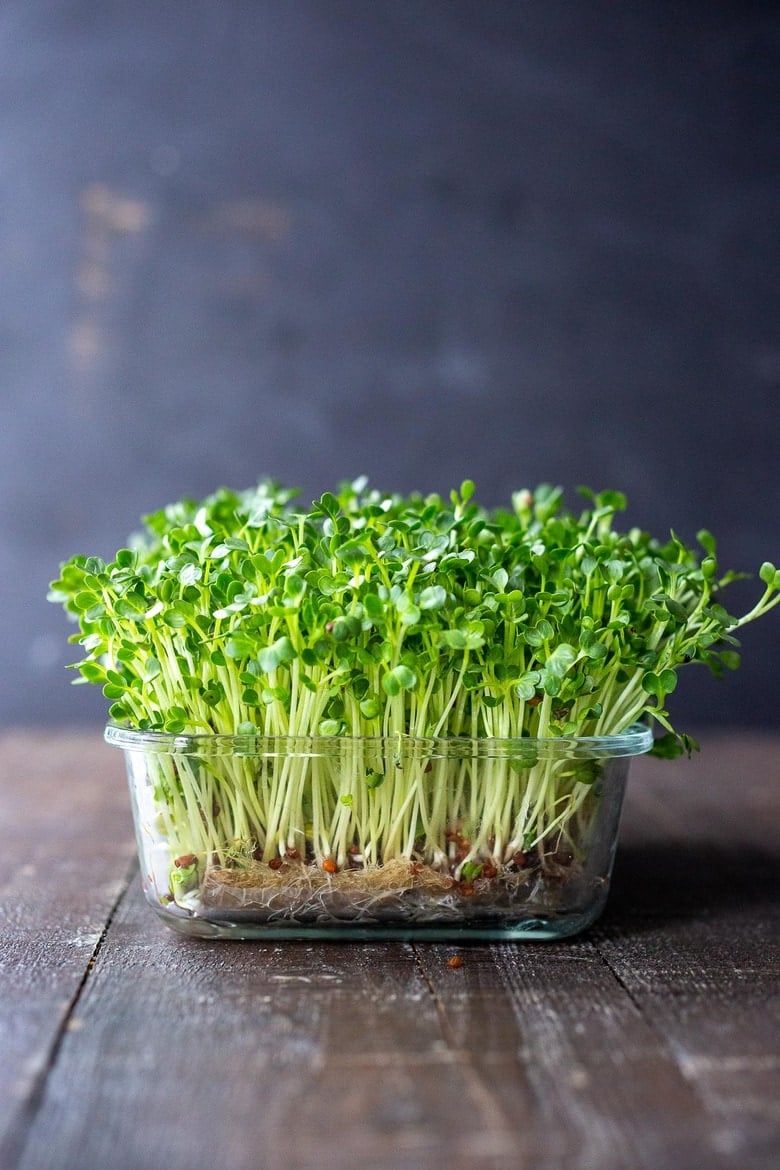
- Seed Distribution:
- Evenly spread the soaked seeds onto the growing medium in your hydroponic system.
- Ensure uniform distribution to prevent overcrowding.
- Pressing Seeds into Medium:
- Gently press the seeds into the medium.
- Ensure good seed-to-medium contact without burying them too deep.
- Promotes optimal water and nutrient absorption.
- Light Requirements:
- Light is crucial for germination.
- Use natural daylight or artificial grow lights.
- Research specific light requirements for different microgreen varieties.
- Temperature and Humidity:
- Maintain temperature between 60 and 75°F (15-24°C).
- Adjust based on variety preferences.
- Aim for 70-80% humidity for a moist environment.
- Patience and Monitoring:
- Be patient as germination times vary.
- Regularly monitor the moisture levels without overwatering.
By following these steps and providing optimal conditions, you’ll lay the groundwork for robust and vibrant hydroponic microgreens. Stay tuned for the next section, where we will explore the key aspects of providing optimal lighting for your hydroponic microgreens.
Providing Optimal Lighting for Hydroponic Microgreens
Optimal lighting is crucial for the successful growth of hydroponic microgreens. Since microgreens have a short growth cycle, they require intense light to promote photosynthesis and lush foliage development. When selecting lighting options for your hydroponic system, it’s important to consider the type of light, its intensity, and duration.

- LED Lights: LED lights are a popular choice for hydroponic microgreens due to their energy efficiency and specific light wavelengths ideal for photosynthesis. They produce less heat, reducing the risk of damaging delicate foliage.
- Full Spectrum: Opt for LED lights with a full spectrum, including blue and red light wavelengths, to stimulate healthy and vigorous growth.
- Light Intensity: Aim for a light intensity of 200-400 micromoles per square meter per second (µmol/m²/s), adjusting based on microgreen variety.
- Positioning: Position lights 15-30 centimeters above microgreen trays for even distribution, adjusting height as plants grow.
- Photoperiod: Establish a photoperiod of 12-16 hours of light per day to mimic natural daylight and promote healthy growth.
Maintaining Proper Temperature and Humidity Levels for Hydroponic Microgreens
Maintaining proper temperature and humidity levels is crucial for the successful growth of hydroponic microgreens. These delicate plants thrive within specific ranges, and any deviations can adversely affect their growth and development.
- Temperature Control:
- Most microgreens prefer a daytime temperature range of 60-75°F (15-24°C).
- Nighttime temperatures should be slightly cooler, around 55-70°F (12-21°C).
- Extreme temperatures can negatively impact growth and health.
- Invest in Temperature Control Devices:
- Depending on your local climate, consider using heaters or coolers.
- Regular monitoring and adjustments maintain consistent temperatures.
- Humidity Management:
- Aim for a relative humidity level of 50-70% for most microgreen varieties.
- High humidity (>80%) can lead to mold and fungal growth.
- Use humidifiers or dehumidifiers as needed.
- Airflow and Ventilation:
- Ensure proper airflow and ventilation to prevent excess humidity buildup.
- Good transpiration aids healthy microgreen growth.
Remember to tailor these conditions to the specific requirements of the microgreens you’re growing. Happy cultivating! 🌱🌿
Nurturing Hydroponic Microgreens with Nutrient Solutions
Nurturing hydroponic microgreens with nutrient solutions is a critical step in ensuring their healthy growth and development. These nutrient solutions provide the essential elements that these tiny plants need to thrive in a soilless environment. The composition of the nutrient solution is carefully balanced to mimic the natural soil conditions, providing the microgreens with the necessary macro and micronutrients.
- Selecting Nutrient Solution:
- Consider the specific nutrient requirements of the microgreen varieties you are growing.
- Use commercially available hydroponic nutrient formulations with a balanced blend of essential nutrients.
- Key nutrients include nitrogen, phosphorus, potassium, calcium, magnesium, and trace minerals (iron, zinc, manganese).
- Monitoring pH and EC Levels:
- Regularly test and adjust the pH of the nutrient solution.
- Maintain a pH range of 5.5 to 6.5 for hydroponic microgreens.
- Monitor electrical conductivity (EC) to ensure proper nutrient concentration.
- Aeration and Circulation:
- Proper air circulation and oxygenation are crucial for nutrient uptake.
- Use air stones, water pumps, or other aeration devices in the hydroponic system.
- Ensure oxygen reaches the root zone for healthy microgreen growth.
By adhering to these practices and ensuring the proper nutrient solution composition, pH and EC levels, as well as sufficient aeration, you can effectively nurture your hydroponic microgreens. This will promote healthy growth, vibrant colors, and robust flavors in your microgreens, allowing you to enjoy these nutrient-rich greens in your meals while reaping the benefits of urban gardening.
Watering and Caring for Hydroponic Microgreens
To ensure the successful growth and development of hydroponic microgreens, proper watering and care are essential.
- Balancing Moisture:
- Avoid overwatering (which can lead to root rot) and underwatering (resulting in stunted growth).
- Strive for the right balance to maintain optimal plant health.
- Germination Phase:
- During germination, microgreens need consistent moisture.
- Mist the growing medium or lightly water the tray bottom to keep seeds moist without saturating the medium.
- Growth Phase:
- As microgreens grow, adjust watering techniques.
- Lightly mist leaves or bottom water the tray to provide moisture.
- Regular Monitoring:
- Monitor moisture levels regularly.
- Adjust the watering schedule based on the specific needs of your microgreens.
Remember that attentive care and observation are essential for successful hydroponic microgreens! 🌱🌿
Watering and Caring for Hydroponic Microgreens
| Care Aspect | Description |
|---|---|
| 1. Watering Frequency | – Consistent Moisture: Maintain even moisture levels in the hydroponic medium. |
| – Multiple Times Daily: Depending on the system, consider watering 2-4 times daily. | |
| – Avoid Waterlogging: Ensure adequate drainage to prevent waterlogging. | |
| 2. Nutrient Solution | – Diluted Nutrients: Use a properly diluted hydroponic nutrient solution suitable for microgreens. |
| – Regular Monitoring: Check nutrient levels regularly and adjust as needed. | |
| – Follow Manufacturer Guidelines: Adhere to the recommended nutrient solution concentrations. | |
| 3. pH Levels | – Optimal pH Range: Maintain pH levels between 5.5 and 6.5 for most microgreens. |
| – Regular pH Monitoring: Check pH regularly using a pH meter or test strips. | |
| – Adjust as Necessary: Use pH-up or pH-down solutions to adjust pH levels. | |
| 4. Light Requirements | – Adequate Light: Provide sufficient light, preferably using full-spectrum LED or fluorescent lights. |
| – Light Duration: Aim for 12-16 hours of light per day for optimal growth. | |
| – Adjustable Light Height: Maintain an appropriate distance between lights and microgreens. | |
| 5. Temperature Control | – Moderate Temperatures: Keep the growing environment within a range of 60-75°F (15-24°C). |
| – Ventilation: Ensure proper air circulation to prevent heat buildup. | |
| – Avoid Extreme Fluctuations: Maintain stable temperatures for consistent growth. | |
| 6. Harvesting | – Harvest at Optimal Stage: Harvest when the microgreens have reached the desired size and flavor. |
| – Use Clean Tools: Use clean and sharp scissors for harvesting to avoid contamination. | |
| – Continuous Harvesting: Harvest regularly to encourage continuous growth. | |
| 7. Pest Prevention | – Hygiene Practices: Maintain a clean growing environment to deter pests. |
| – Inspect Regularly: Regularly inspect for signs of pests or diseases. | |
| – Natural Predators: Introduce beneficial insects for pest control in hydroponic systems. |
Note: Customize care practices based on the specific type of microgreens you are growing and the hydroponic system in use. Regular monitoring and adjustments are crucial for successful hydroponic microgreen cultivation.
Preventing and Managing Common Pests and Diseases in Hydroponic Microgreens
One of the primary concerns for hydroponic microgreen growers is preventing and managing common pests and diseases. While hydroponic systems can provide a controlled environment that reduces the risk of infestations and infections, certain precautions still need to be taken to ensure the health and vitality of your microgreens.
- Maintain Cleanliness: Regularly sanitize equipment, trays, and nutrient solution reservoir to prevent pathogen buildup. Use fresh, uncontaminated water to avoid potential contaminants.
- Implement Preventive Measures: Incorporate beneficial insects like ladybugs or predatory mites to control common pests such as aphids or spider mites. Practice crop rotation and avoid continuous planting of the same microgreens to reduce the risk of specific diseases.
- Prompt Action for Pest and Disease Control: In case of pest or disease outbreaks, early detection and identification are crucial. Regularly inspect plants for signs of damage or unusual growth. Consult local agricultural extension offices or horticultural experts for effective treatment options.
By implementing preventative measures and promptly addressing any issues that arise, you can maintain a healthy and thriving hydroponic microgreen garden. Remember, proper attention to pests and diseases is an integral part of successful hydroponic gardening.
Harvesting and Storing Hydroponic Microgreens
Harvesting and storing hydroponic microgreens is a crucial step in the process of cultivating these nutrient-packed plants. When it comes to harvesting, timing is everything. It is recommended to harvest your hydroponic microgreens when they have reached the true leaf stage. At this point, they will have developed their second set of leaves, which are larger and more distinct than the initial cotyledon leaves.

- Harvesting:
- Use sharp, clean scissors or a knife.
- Cut microgreens just above the growing medium level.
- Allow for easy regrowth and ensure remaining plants thrive.
- Handle delicately to avoid leaf damage.
- Storage:
- Line a container with a clean kitchen towel or paper towel.
- Place harvested microgreens in the container.
- Loosely cover with a lid or plastic wrap.
- Store in the refrigerator to maintain freshness.
By following these harvesting and storing guidelines, you can enjoy the maximum freshness and flavor of your hydroponic microgreens for a longer period.
Enjoying and Incorporating Hydroponic Microgreens into Your Meals
- Versatile Meal Additions: Hydroponic microgreens are versatile and can be easily incorporated into various meals, adding both flavor and nutrition.
- Delicious Flavor and Texture: Whether added to salads, sandwiches, wraps, or smoothies, microgreens provide a burst of freshness, vibrant colors, and delicate textures, enhancing the overall taste experience.
- Salad Toppings: Microgreens are perfect as salad toppings, elevating ordinary salads into gourmet experiences with their tender leaves and intense flavors. Mix different varieties for interesting flavor combinations and experiment with dressings.
- Sandwiches and Wraps: Incorporate microgreens into sandwiches and wraps for a delightful crunch and burst of flavor, enhancing the overall taste profile of your meal.
- Smoothie Boost: Blend microgreens into smoothies to boost nutritional content and add a refreshing twist to your morning routine, expanding the ways you can enjoy their benefits in your diet.
- Endless Possibilities: With hydroponic microgreens, the possibilities for enjoying and incorporating them into your meals are endless. Get creative in the kitchen and explore new ways to savor their deliciousness!
The possibilities are endless when it comes to enjoying and incorporating hydroponic microgreens into your meals, so don’t hesitate to get creative in the kitchen!
Watch video for more information:
FAQ
Can I grow hydroponic microgreens in my small apartment?
Yes, hydroponic microgreens can be grown in small spaces like apartments. They require minimal space and can be grown on a countertop or a small shelf with proper lighting and ventilation.
How long does it take for hydroponic microgreens to germinate?
The germination time for hydroponic microgreens varies depending on the variety. On average, it takes about 2-7 days for the seeds to germinate and start developing into microgreens.
Can I reuse the nutrient solution for growing hydroponic microgreens?
It is recommended to change the nutrient solution for each batch of hydroponic microgreens. Reusing the same solution may lead to nutrient imbalances and increase the risk of pests and diseases.
Can I use regular potting soil for hydroponic microgreens?
No, regular potting soil is not suitable for hydroponic microgreens. It can retain too much water and suffocate the roots. Instead, it’s best to use a specialized growing medium like coco coir or rockwool.
Do hydroponic microgreens require pollination?
No, hydroponic microgreens do not require pollination as they are harvested at an early stage before they develop flowers and produce seeds.
Can I grow hydroponic microgreens without artificial lighting?
While natural sunlight can be used for growing hydroponic microgreens, it may not provide consistent and sufficient light. Using artificial lighting, such as LED grow lights, ensures optimal growth and consistent results.
How often should I water my hydroponic microgreens?
Hydroponic microgreens should be watered regularly to keep the growing medium moist but not waterlogged. It is recommended to water them once or twice a day, depending on the humidity levels and the moisture needs of the specific variety.
Can I store harvested hydroponic microgreens for a long time?
Hydroponic microgreens are best consumed fresh for maximum flavor and nutritional benefits. However, if stored properly in a sealed container or plastic bag in the refrigerator, they can stay fresh for up to a week.
Can I grow hydroponic microgreens without using any fertilizers?
While hydroponic systems provide nutrients directly to the plants, using a balanced and appropriate nutrient solution is essential for the healthy growth of hydroponic microgreens. Fertilizers are necessary to provide the necessary nutrients they need to thrive.
Can I grow hydroponic microgreens all year round?
Yes, one of the advantages of growing hydroponic microgreens is that they can be grown indoors and are not dependent on seasonal changes. With proper lighting and temperature control, you can enjoy fresh hydroponic microgreens throughout the year.

Studied Agricultural Engineering-Plant Protection at University of California, Davis.
Head of Content writing team at Southelmontehydroponics.com

